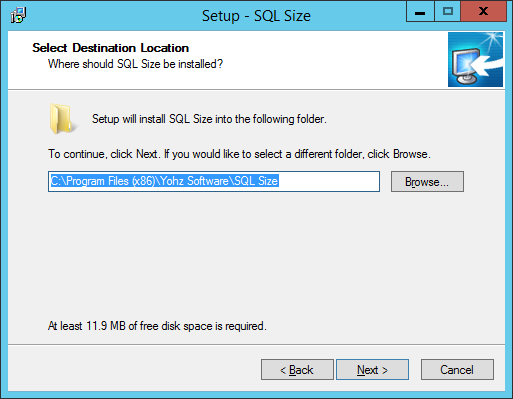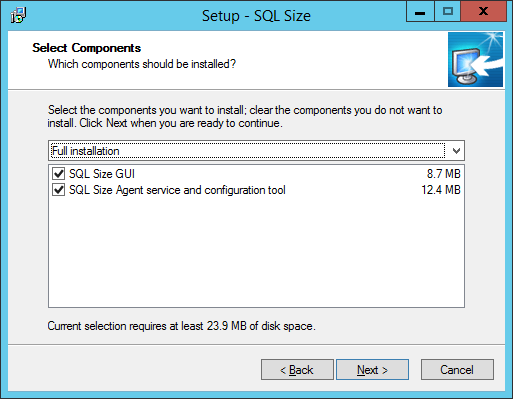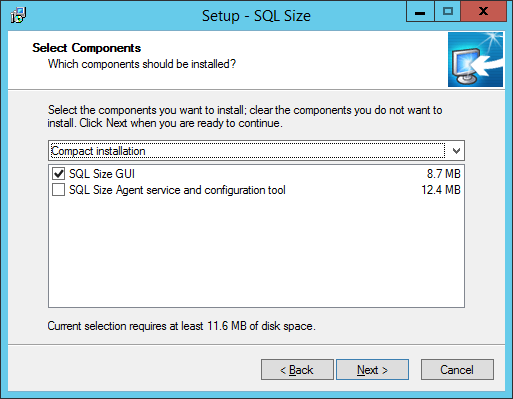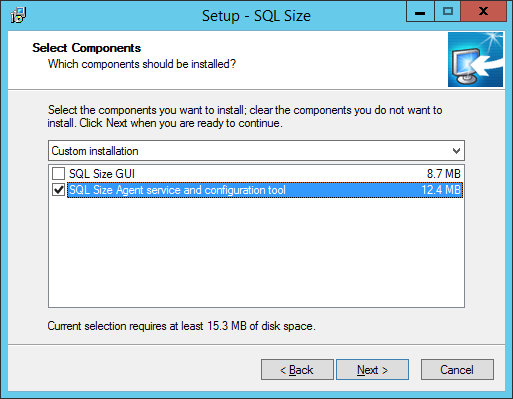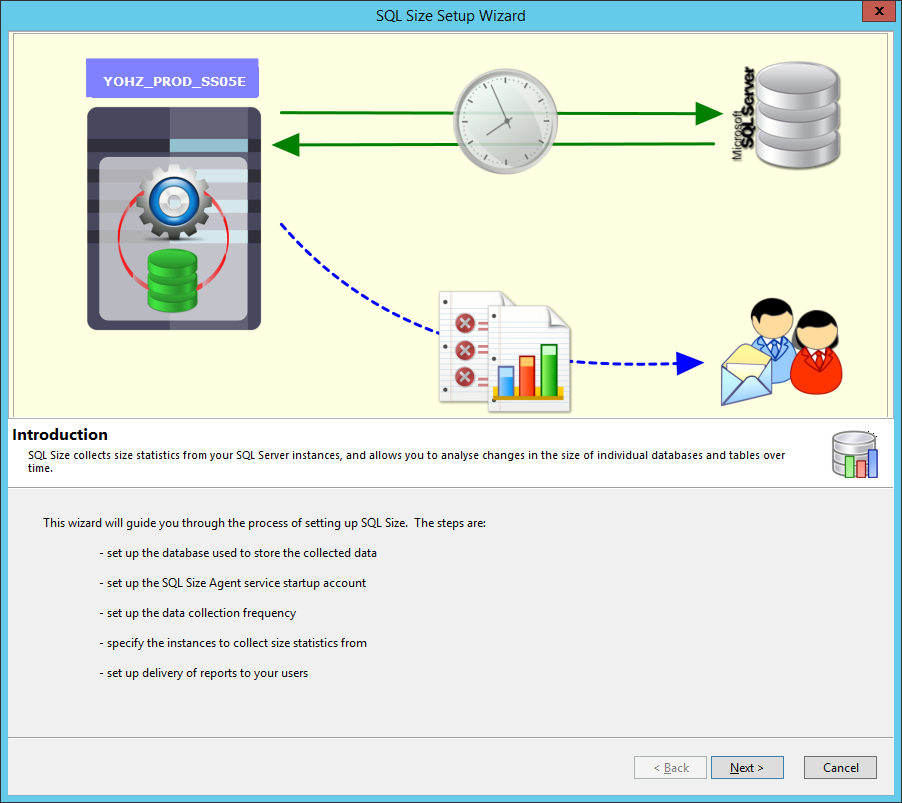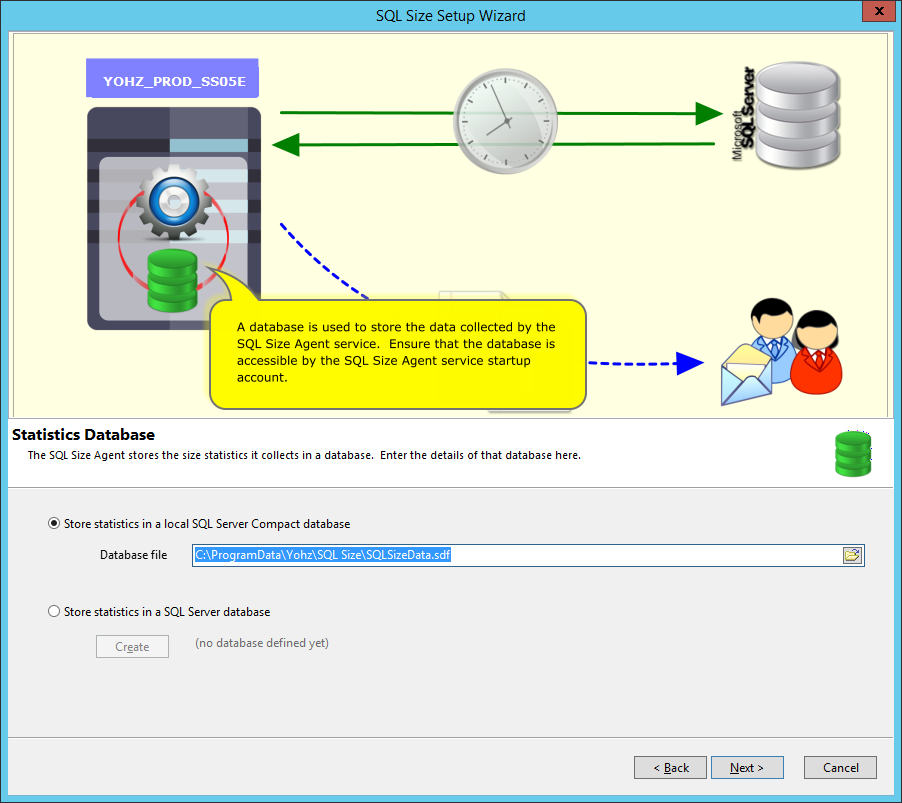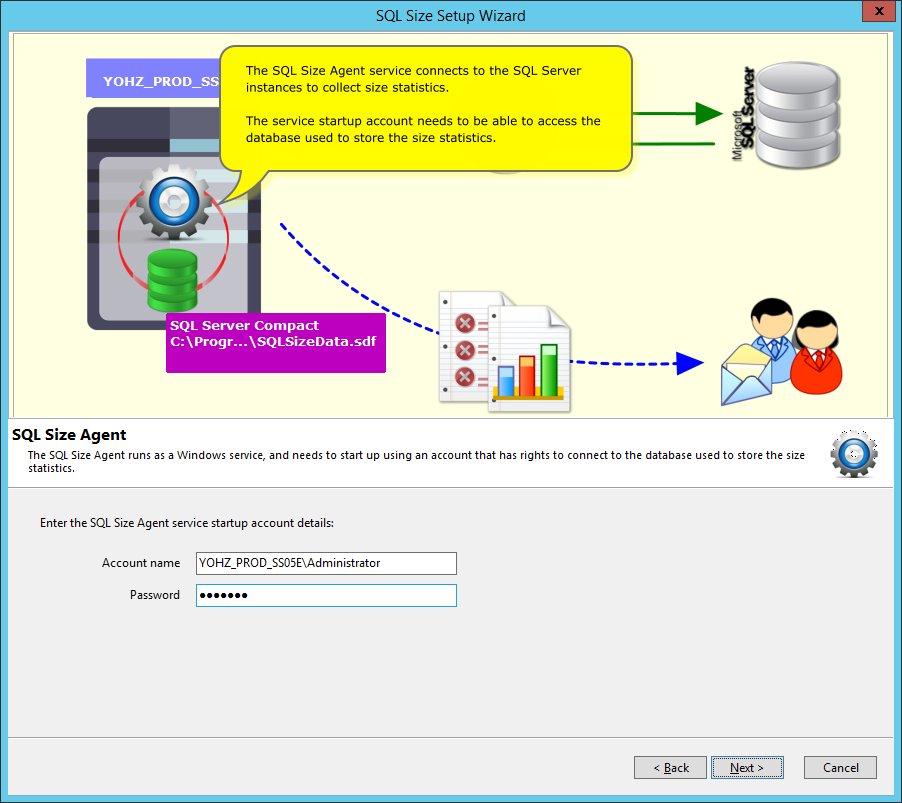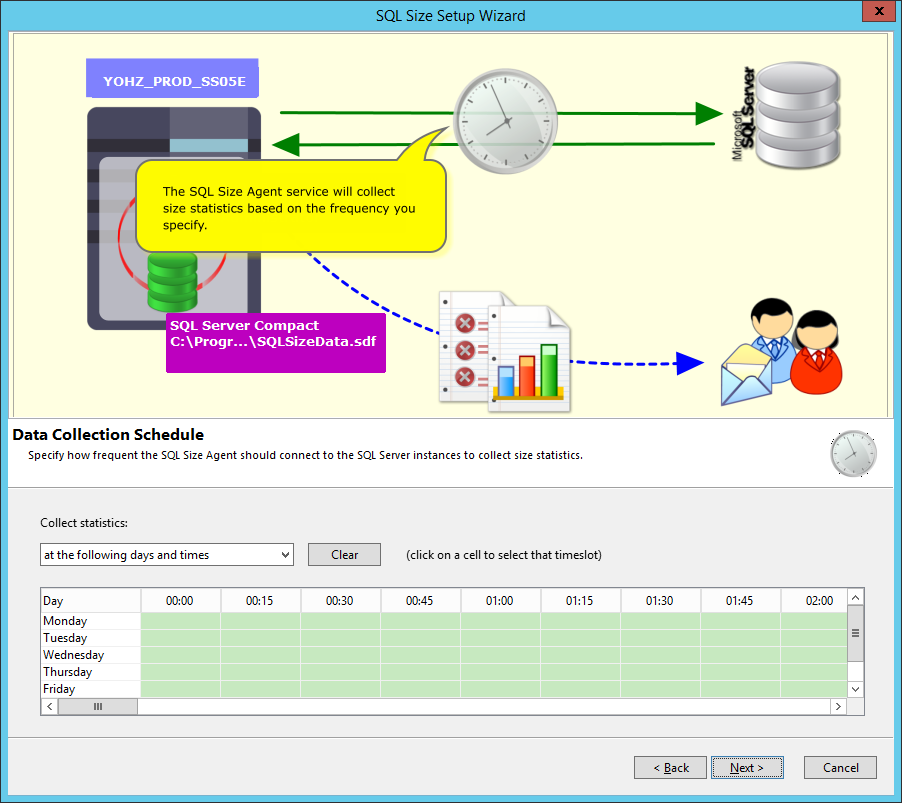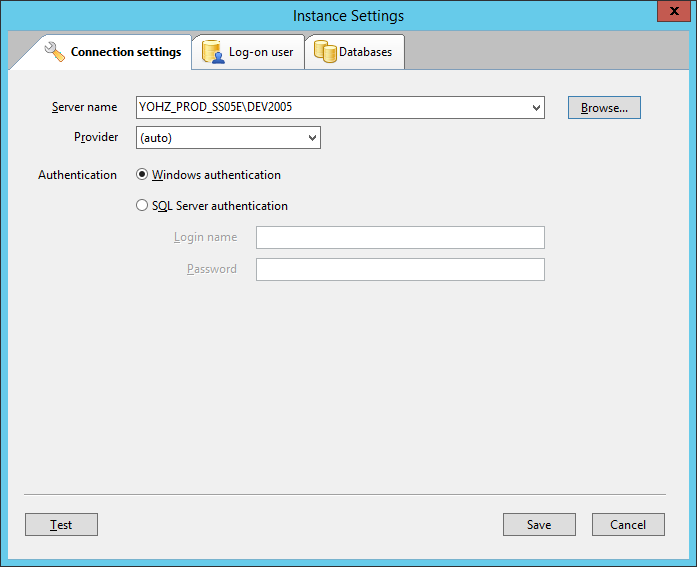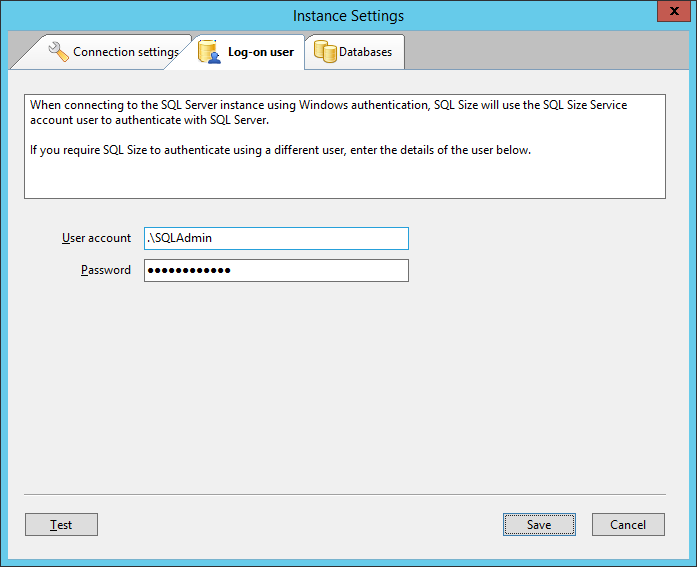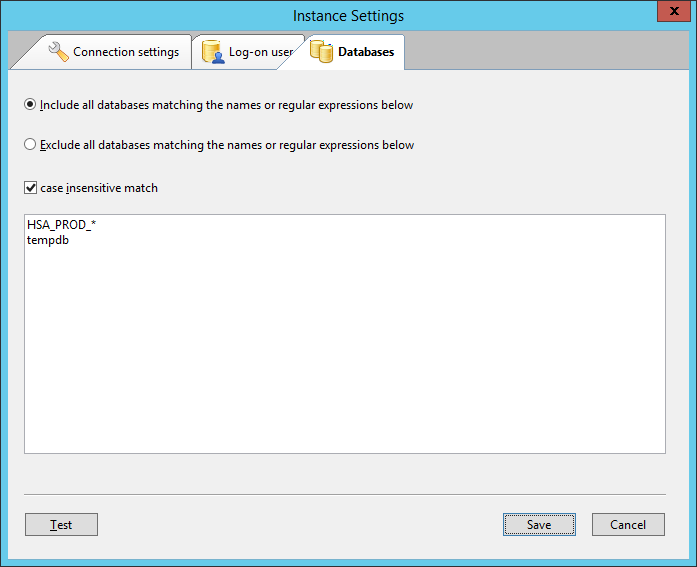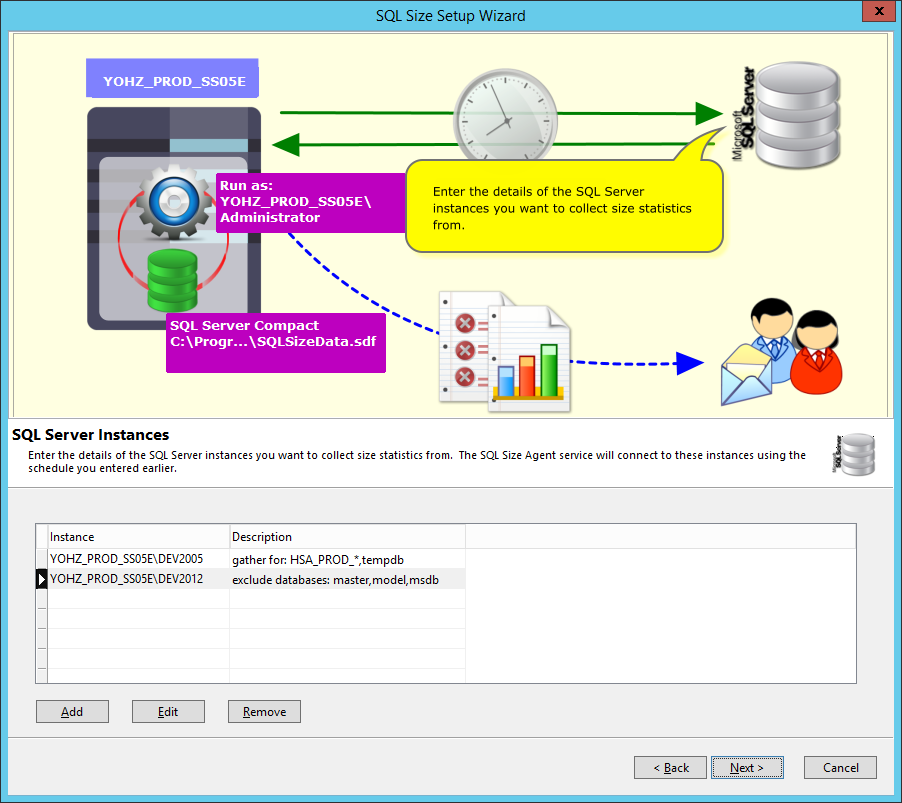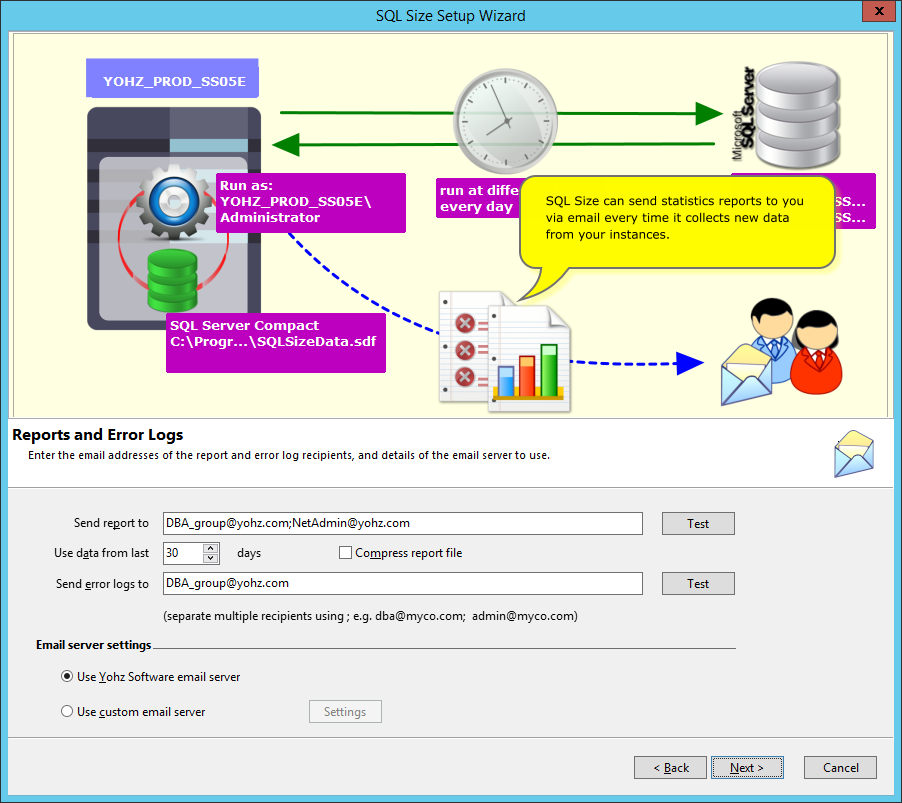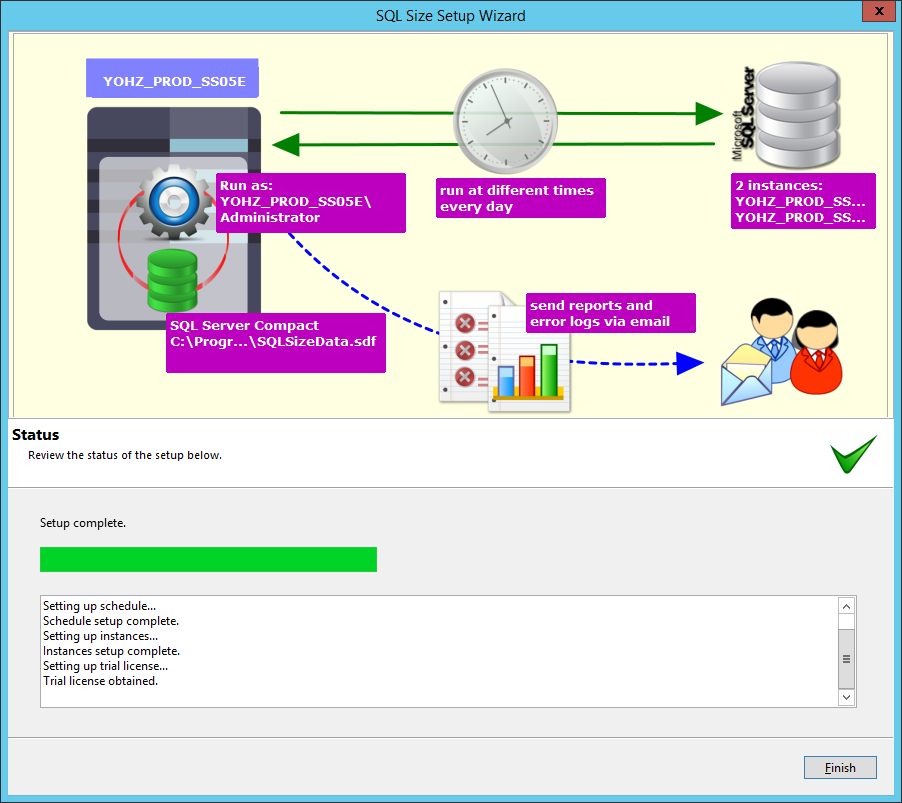 |
Introduction |
 |
User Guide |
 |
Alert functions |
 |
Mathematical functions |
 |
String formatting functions |
 |
Properties |
 |
Properties |
 |
Properties |
 |
Properties |
 |
Properties |
 |
Properties |
|
|
Installation
You
install the SQL Size Agent
service and SQL Size GUI using the
SQL Size installer. During the installation process, you will be
prompted to enter the path where you want to install the SQL Size
files.
Next, you will need to select the type of installation. If you want
to install the SQL Size
Agent service and also the SQL Size
GUI, select the Full installation option.
If you want to install only the SQL
Size GUI, select the Compact installation option.
If you want to install only the SQL Size Agent service, select the
Custom installation option, and select the SQL Size Agent
service and configuration tool item.
When you choose to install the SQL Size Agent service, you will
need to perform additional configuration steps. A setup wizard will
start and provide an overview of the various SQL Size
components.
You will then need to choose how you want to store the SQL Size
data. You can store the data in a SQL Server Compact Edition (SQL
CE) database, or in a SQL Server database. More details are
provided here.
The
SQL Size Agent service needs to be started using an account, and
that account needs to be able to access the SQL Size database, and
also the SQL Server instances it needs to collect data from. You
set up this account in the next step.
The SQL Size Agent service will periodically connect to the SQL
Server instances to collect the size data. You will define the
times at which the Agent will collect the data in the next step.
Click on a cell to select or unselect the associated timeslot.
Active timeslots are displayed in green.
Next, you will provide details of the SQL Server instances you want
to collect size data from. SQL Size supports SQL Server 2005
instances and all subsequent SQL Server versions. SQL Size does not
support SQL Server 7 or SQL Server 2000 instances. For each
instance you want to collect data from, you need to provide the
connection details.
If the account used to start the SQL Size Agent service does not
have rights to access a SQL Server instance, you can impersonate a
different account to connect to that instance on the Log-on
user page.
You can also choose to collect size data from specific databases.
You can include or exclude database using names and regular
expressions. This can be done on the Databases page.
Once you have defined the instances to collect size data from, they
will be listed in the wizard.
SQL Size can send growth trend reports to you via email. You can
set up the recipients and the period in which to report on. You
also define to whom SQL Size should send error logs to. You also
have the choice of using our email server to send reports and/or
logs, or you can use your own email server.
Once
you have set up the above settings, the Setup Wizard will apply
your settings and the installation will complete.
You can change the settings after the installation process by using
the SQL Size
Configuration application.
|
